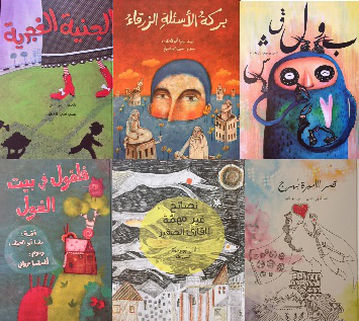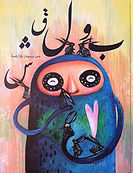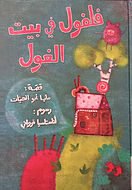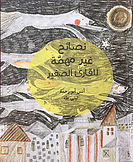This article was last updated on April 16, 2022
Canada: ![]() Oye! Times readers Get FREE $30 to spend on Amazon, Walmart…
Oye! Times readers Get FREE $30 to spend on Amazon, Walmart…
USA: ![]() Oye! Times readers Get FREE $30 to spend on Amazon, Walmart…
Oye! Times readers Get FREE $30 to spend on Amazon, Walmart…
This post originally appeared in Swedish at Arabisk barnlitteratur and has been brought into English in a joint effort by ArabLit’s editor and the post’s author.
Tomorrow, we’ll have an interview with award-winning Palestinian YA novelist Sonia Nimr, who has just published a new book. For today, six works from 2016:
By Elisabet Risberg

2016 was a great year for Palestinian children’s literature, and a number of authors and illustrators were honored with shortlistings and awards for both the Etisalat Prize and the Sheikh Zayed Award. But these developments in Palestinian literature for young people weren’t something that happened all of a sudden.
Palestine has the most libraries among Arab-majority nations, and the Tamer Institute’s efforts to promote reading have created a strong foundation for Palestinian children’s books. Each year, events such as “National Reading Week” are organized. This week includes a writing contest for children wherein winning entries are published in a book called Kitab al-Awwal, or My First Book. There are also other projects that encourage Palestinian children to write creatively and publish their own stories.
It was 2009 when Warshah Filastin lil-Kitab (The Palestine Writing Workshop) was founded. At first, it really was a single workshop. But from it arose the idea of founding a support organization for Palestinian writers and illustrators. Today’s Warshah is very much about creating possibilities for children’s-book creators to develop, and support the economic conditions for the creation of literature.
But the organizations does more than this: They work on promoting reading in schools, they organize book clubs and storytelling activities, and they organize field trips for schoolchildren. Recently, they launched a project with a focus on writing and publishing books for young people.
In 2016, Warshah published six picture books for children. A few of these have attracted wide attention, but all are worth mentioning, and more than that, reading! All are available on Yalla Art.

بولقش
يارا بامية
Bulqash
Yara Bamieh
This is a fabulous and fantastic story about Bulqash’s visit to an island full of wild rabbits that takes place on a certain day each year — the day of the first spring flower. Since it happens each year, they all wait longingly for the day, just as a child might wait for Christmas. It’s a story about longing, about play, and about what a source of amazement life can be, in its aspects both mundane and unique. Yara Bamieh plays masterfully with words and pictures, and the fact that Bulqash won the Etisalat Award for Best Production is no surprise.
#

بركة الأسئلة الزرقاء
مايا أبو الحيات وحسان مناصرة
A Pool of Blue Questions
Maya Abu Alhayyat and Hassan Manasrah
Who is this strange man who goes around, alone and humming? Flowers grow out of his coat sleeve and everything he reads in books turn into questions that fall on the town. Together, these questions form a blue pond.
This book is almost like a philosophical meditation on man’s search for happiness. It hasn’t been easy for me to grasp, but every time I read it, I think more and more both about the text itself and about the amazing illustrations. The book is a work of art in itself and attracts really imaginative musings, both for children and for adults. This book won the Etisalat Prize for Best Illustrations.
#

فلفول في بيت الغول
مايا أبو الحيات واناستاسيا قرواني
Falful in the Troll’s House
Maya Abu Al-Hayyat and Anastasia Qarwani
Falful is a little mouse who lives with al-Ghul — the troll — and his three troll siblings: Maltoub, who’s afraid of the dark, Banurah, who’s always chewing gum, and Sansur, who’s always roaring with anger, causing havoc, and terrifying poor Falful. Should he be quiet as a mouse, as Maltub suggests, or should he yell back, as Banurah says? In the end, Falful asks al-Ghul for help, and the story ends just as well as any magic story can.
#

نصائح غير مهمة للقارئ الصغير
أنس أبو رحمة ولبنى طه
Unnecessary Advice for the Young Reader
Anas Aburahma and Lubna Taha
Although unnecessary, this advice can be just as amazing! Consider the following:
Do not read when you are hungry.
Do not read when you smell freshly baked bread.
Invite your favorite character to dinner with your family.
Don’t ask to become friends with your favorite author on Facebook.
Choose any book, but especially the one that you find in your grandfather’s room, or out on the street.
Don’t tell anyone what book you’re reading until you’ve read it.
Read to your dog!
If I had to pick one piece of favorite advice from all this, it would be the advice to google a photo of one of my favorite writers, memorize the picture, and draw it. The book includes a drawing of Mohieddin El Labbad (1940-2010), a great Egyptian illustrator, of whose illustrations I am inordinately fond.
#

الجنية الغجرية
ميس داغر وضحى الخطيب
The Gypsy Witch
Mays Dagher and Daha Al Khateb
This story begins with children talking about a frightening woman who must certainly be a witch, and everyone is frightened! She has large magic eyes, a nose as long as an elephant’s trunk, and teeth as sharp as a wolf’s. She surely eats kids, too! But fantasies rarely match reality, and these children’s fantasies turn out to be no more than imagination. One of the girls tells us she enjoyed the woman’s company on a bus, and although she first fearfully turned down an apple and an orange from the woman, she could not resist strawberries!
“Thank you,” she said. “Just one.” But it wasn’t long before together they had gobbled up all the strawberries, and the apple and orange besides, and the girl realized there was nothing to be afraid of! Moreover, it turned out they both had frightening fantasies of each other, and each had been just as scared!
#

قصر الأميرة بهرج
أحلام بشارات وريما الكوسا
The Palace of Princess Buhruj
Ahlam Bisharat and Rima Kusa
For the sake of a single bloom, the earth grew greenery… So begins this dreamlike story of a garden, a princess’s beauty, and how the love of a prince falls, as rain falls to the earth, as trees flourish, as the stars glimmer. The prince is looking for Princess Buhruj, and he struggles through the mist that settles over the mountains and builds a palace to capture the princess’s attention, a palace with windows that reflect the sun and moon. When spring arrives, everything is ready for the arrival of a princess.
Click HERE to read more.
Vote for Shikha Dhingra For Mrs South Asia Canada 2017 by liking her Facebook page.
You can publish this article on your website as long as you provide a link back to this page.


Be the first to comment